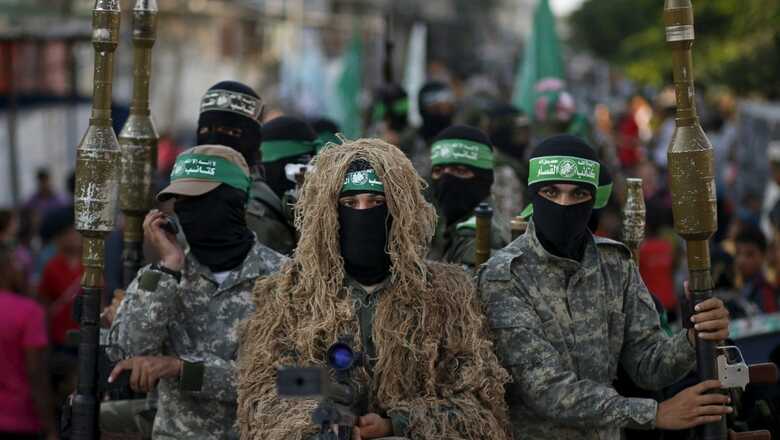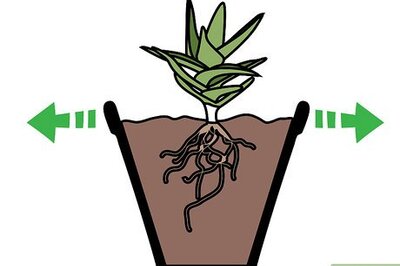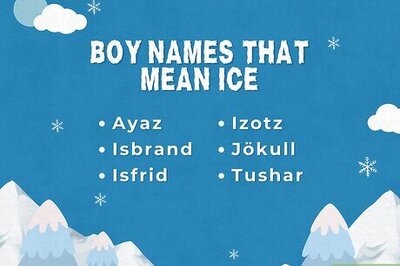
views
On October 7, the world woke up to the horror that was unfolding in Israel. Thousands of Hamas fighters penetrated the Israeli defence forces in Gaza in one of the worst terror attacks that was being unleashed in front of the world. The attack came at a time when Israel was celebrating Yom Kippur, their most important annual festival. What unfolded in the next 72 hours was a ghoulish massacre that the world hasn’t witnessed since 26\11 when Pakistani terrorists of Lashkar-e-Taiba (LeT) unleashed a similar massacre in Mumbai.
Hamas fighters, many with mounted GoPro cameras, recorded the systematic huntdown they carried out on innocent civilians in Israel. From crashing into a rave party and massacring 260 young Israelis, going door to door carrying out their frenzy and recording it simultaneously for their audience the world over, shooting point blank to using pick axes to beat their victims to death, to blowing up people using RPGs and hand grenades, to burning down people alive, they used all beastly methods to carry out the macabre. The bodies of men, women, and children — young as well old — lay in tatters around Israel due to the bestiality unleashed by Hamas. As the Israeli defence forces absorbed the initial shock and started the counter-offensive, more than 1300 people lay dead, more than 3,000 were injured and 240 people were carried back to Gaza and taken hostage.
Hamas emerged on the political landscape of Palestine in 1987 as a breakaway group of the Palestinian Chapter of the Muslim Brotherhood. Muslim Brotherhood is a socio-political Islamic group that aspires to set up a state as per Islamic laws, commonly known as Sharia law. The group seized power in Egypt after the Arab Spring. It won several elections in Egypt in 2011 and in 2012, it won the presidential elections in Egypt. Mohammad Morsi became the first president of Egypt after winning the elections. Within a year, he was overthrown by the Egyptian military after mass demonstrations and protests took place against the Muslim Brotherhood government. The group was subsequently banned in Egypt and declared a terrorist organisation.
Saudi Arabia and the UAE followed suit and declared it as a terrorist organisation. As of today, the group primarily operates out of Turkey and Qatar, though it has several other wings operating in Western countries predominantly in the US, UK and Germany. Muslim Brotherhood members participated in the first Arab-Israeli war of 1948 alongside the Arab armies. Its stated goal is to establish an Islamic Palestinian state in place of Israel. Hamas’ current chairman of the political bureau, Ismail Haniyeh, resides in Qatar.
Hamas carried out its first act of terrorism in 1993, five months before the Oslo Accords 1 was to be signed between the Palestinian Liberation Organisation leader Yasir Arafat and Israeli Prime Minister Yitzhak Rabin in Washington. A suicide bomber blew himself up, killing 15 people in Jerusalem. Since then, Hamas has carried out numerous attacks targeting Israeli civilians and military alike. Though Hamas’ striking capability was low in the initial years, they built up their fighting capability slowly and steadily.
After they won local elections in Gaza in 2006, Hamas suddenly became a force to reckon with. Behind Hamas’ rise was a silent hand of the Muslim Brotherhood. Hamas charter openly rebuked the peace proposal based on the two-state solution, called for the annihilation of Israel as a state and acknowledged the Muslim Brotherhood as their parent organisation. Hamas only disassociated itself from the Muslim Brotherhood in 2017 after it revised its charter.
As the Israelis started the retaliation against Hamas, the blurring of lines started emerging. The Western world saw the emergence of large rallies in support of the Palestinian cause and in many cases, in support of Hamas. The common narrative was the echoing of the thought that the Hamas action wasn’t a result of a vacuum. Universities, academia, journalists, and politicians echoed these lines in unison. Pro-Palestinian rallies were held in many parts of the world calling for the termination of Israel and brazenly displaying anti-Semitism. The most shocking response came from the United Nations which refused to condemn Hamas’ action while holding a vote within the UN members on calling for a ceasefire between Israel and Hamas.
While the Israelis are battling Hamas, the opinion of the world remains sharply divided on the Hamas action of 7/10. Much of the credit for this goes to the Muslim Brotherhood which over the years has spun a web of yarn around the Palestinian cause, especially in the Western part of the world. The success of the Muslim Brotherhood could be gauged by the fact that the vociferous response to the Palestinian cause was much larger than some Asian countries which are home to a large Muslim population, including India.
Though the presence of the Muslim Brotherhood was largely in the Arab region since the 1930s, it panned out in the Western world 1950s onwards. Mostly students and early immigrants structured mosques as community centres. Following the organisational model given by its founder HasanAl Bana and funded both by public and private donors of Arab Gulf countries, they established rights groups, schools and think tanks. Over time, they set up a multitude of organisations in education, finance, and public charity, as well as political lobbying for their cause worldwide including that of Palestine. Western democracies allowed them to carry out activities which the Arab Muslim countries had banned them from. In 2020, they established their headquarters in Brussels for their pan-European umbrella organisation under the banner of the Council of European Muslims. Similarly, they set up their offices in the UK, US, France, and Austria.
In the US alone, they run multiple organisations that defend and promote their ideology of political Islam. Some of the prominent organisations with links to the Muslim Brotherhood in the US include the Council on American Islamic Relations (CAIR), Islamic Society of North America (ISNA) and Northern American Islamic Trust (NAIT). These organisations and their leaders are heavily invested in the academia of various colleges and universities in the US. The administration under President Barack Obama was known to be extremely sympathetic towards the members of the Muslim Brotherhood.
Similarly, in the UK, it established secretive organisations and the same modus operandi as that in the US and Europe. They set up many student bodies and societies in colleges and universities across the UK including Harvard University. Their political influence also grew considerably. The UK Labour Party has been an open advocate for their causes in Palestine. Though the UK government launched an investigation into the Muslim Brotherhood in 2015, one of the senior leaders of Hamas, Mohamed Qasim Sawalha, continues to reside in London.
Given the influence and political depth the Muslim Brotherhood and its like-minded organisations have created over the years, it should hold no surprise as to why the world was bewildered when anti-Semitism was openly displayed on college and university campuses as well as on streets of the Western countries.
The appropriation of violence and acts of terror under the garb of a “reason” is a dangerous precedence being set across the world. Though the experts can differ on the different practising ideologies, their stated aims and the modus operandi of terror organisations like ISIS, Al Qaeda, Hamas, LeT and numerous others, the definition of terrorism cannot be diluted and appropriation of violence cannot be accepted. Providing any intellectual cover to the acts of terror will eventually lead to the precedence where the uncivilised will appropriate any reason for acts of violence on the innocent and the civilised would be found wanting for a reason to denounce it as an act of terror.
Raja Muneeb is an independent journalist and a columnist, a geo-political and a Nat Sec analyst. Views expressed in the above piece are personal and solely that of the author. They do not necessarily reflect News18’s views.



















Comments
0 comment